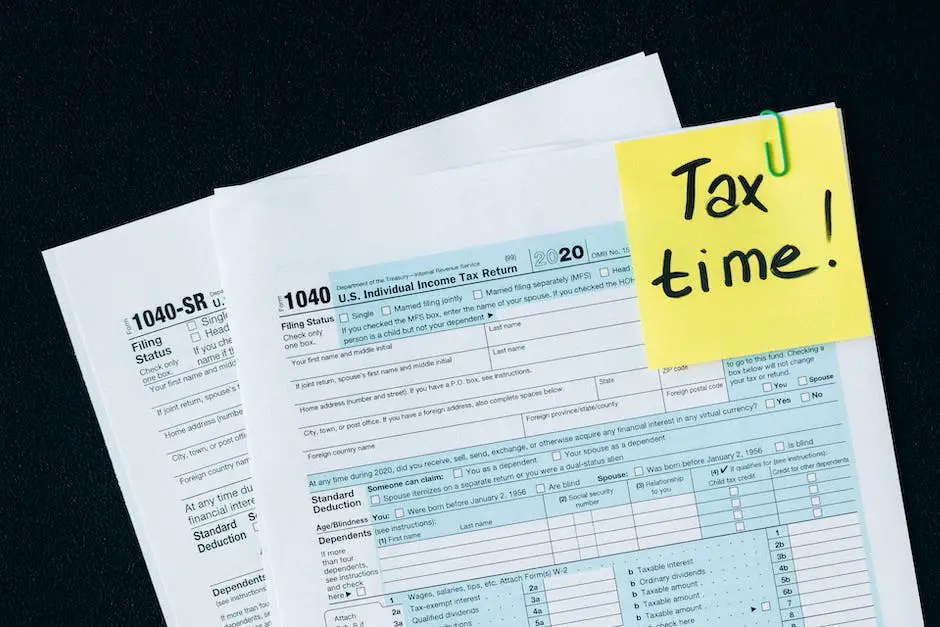Navigating the world of tax filings can be a daunting task, especially when you’re new to the process. This guide provides a comprehensive insight into the basics of tax forms, their importance, and who is obligated to fill them out. With a better comprehension of the different types of tax forms such as Form 1040 and its variations, Schedules SE, E, C amongst others, you can understand their unique requirements and in turn, fulfill your tax obligations more efficiently. Not only will this resource guide you on how to fill out these forms correctly, but it will introduce you to the practical and modern method of online filing. It goes further to provide solutions to common issues encountered when dealing with tax forms. This guide aims to simplify the process, offering you a better understanding and more confidence when dealing with your taxes.
Basics of Tax Forms
What are Tax Forms?
Tax forms are documents that the Internal Revenue Service (IRS) requires taxpayers to fill out and submit to report their annual income, expenses, and other relevant financial information. These forms are the main instruments through which taxpayers communicate their financial situations to the IRS. Tax forms show the amount of taxes a taxpayer owes, or they may demonstrate that certain taxpayers qualify for tax relief or a refund.
Importance of Tax Forms
Tax forms are a critical tool for the operation of the federal and state governments in the United States. The financial information given on these forms helps to determine how much tax revenue is collected each year, allowing for the functioning of many public sector services and infrastructures. They are also important for individual taxpayers as they allow in claiming possibilities for tax deductions and credits. Moreover, tax forms provide a record of each taxpayer’s financial habits, information that can be pivotal during financial planning or mortgage applications.
Who Should Fill Out Tax Forms
Every citizen or resident in the United States who earned a certain amount of income during the year must fill out a tax form. This is applicable whether the income is from wages, self-employment, or unearned income, such as interest or dividends. Businesses, charities, and trusts may also need to file tax returns. However, there are exceptions based on the filing status, age, and type of income. For example, a dependent person whose income meets or exceeds certain limits should also file tax forms.
Overview of Tax Filing Process
The tax filing process begins with the taxpayer receiving various forms from their employer, financial institutions, or other places that pay them income. These forms report the amount of income the taxpayer has earned throughout the year. The IRS Form 1040, ‘U.S. Individual Income Tax Return,’ is the standard federal income tax form used to report an individual’s gross income.
The taxpayer must then determine their filing status, which could be single, married filing jointly, married filing separately, head of household, or widow(er) with dependent child. Following this, the taxpayer will compute their adjusted gross income (AGI) by subtracting certain adjustments from their gross income.
Once the AGI is determined, the taxpayer will then take either the standard deduction or itemize their deductions. This comes off of the AGI to provide the taxable income. Tax is then calculated on the taxable income, after which credits and other taxes are applied. The taxpayer either owes taxes if their withholdings and estimated tax payments for the year fall short of their tax liability, or gets a refund if they have overpaid.
Key Terms Related to Tax Forms
- Gross Income: The total income from all sources before deductions or adjustments.
- Adjusted Gross Income (AGI): Gross income minus certain adjustments. AGI is important as it is used to calculate the taxpayer’s overall tax liability.
- Tax Deduction: An expense that a taxpayer can subtract from their gross income, thereby reducing the total amount of income that is subject to tax.
- Tax Credit: A dollar-for-dollar reduction in the taxpayer’s tax bill.
- Withholding: A portion of an employee’s wages that an employer sends directly to the IRS, part of the employee’s tax payment for the year.
- Standard Deduction: A set amount of money that taxpayers are allowed to deduct from their taxable income, reducing their overall tax liability. This amount changes each year and varies depending on the taxpayer’s filing status.
- Itemized Deduction: Specific expenses that taxpayers can subtract from their AGI to reduce their taxable income. These could include medical expenses, mortgage interest paid, state and local taxes paid, and charitable donations.
- Dependent: A person who relies on the taxpayer for financial support. Dependents can provide extra allowances for exemptions to the taxpayer.
Grasping the concepts related to tax forms and familiarizing oneself with the associated terminology is pivotal in ensuring an accurate and lawful submission of your tax returns. Not only does it streamline your financial planning, but it also equips you with the knowledge to leverage potential tax savings to the fullest.

Different Types of Tax Forms
Form 1040: U.S. Individual Tax Return
Let’s delve into the standard federal income tax form, widely known as Form 1040. It serves as a platform for individuals to report their total income, including earnings, dividends, and interest, hence also referred to as the U.S. Individual Tax Return form. Regardless of their unique tax circumstances, all taxpayers are eligible to use Form 1040. Typically, it is submitted by April 15th every year, or the subsequent business day if the 15th falls on a weekend. The form comprises several sections that allow taxpayers to record their income, deductions, tax credits, refundable taxes, and more pertaining to their tax status.
Form 1040-SR: Tax Return for Seniors
Form 1040-SR is a variation of Form 1040 specifically designed for senior citizens, generally those who are 65 and older. The only difference between 1040 and 1040-SR is the format. Form 1040-SR uses a larger font and includes a standard deduction chart, making it easier for seniors to read and understand. The type of income reported and deductions applied are the same as on Form 1040.
Form 1040-NR: U.S. Nonresident Alien Income Tax Return
Form 1040-NR is utilized by nonresident aliens who conducted business or trade in the United States or earned income from U.S. sources. The form accounts for the different tax laws that apply to foreign income, letting nonresident aliens report wages, dividends, and other income types.
Schedule SE: Self-Employment Tax
Schedule SE is used by self-employed individuals to calculate the tax due on net earnings from self-employment. Anyone who has earned $400 or more from self-employment must file a Schedule SE. It helps calculate the amount of self-employment tax owed (for Social Security and Medicare) and includes a section for deducting part of these payments.
Schedule E: Supplemental Income and Loss
Schedule E is used by filers who have income from rental properties, royalties, partnerships, S corporations, estates, trusts, and residual interests in real estate mortgage investment conduits. This form helps calculate the income or losses from these types of businesses and reports it on Form 1040.
Schedule C: Profit or Loss from Business
Schedule C is used to report income or loss from a business you operated or a profession you practiced as a sole proprietor. The form requires you to provide details about your business income, costs of goods sold, business expenses, and net profit or loss. It also caters to the calculation of self-employment tax if your business made a profit.
Navigating the world of taxes can seem compelling, with different classifications and forms adding to the complexity. However, you have the option of either filing these forms manually and mailing them to the Internal Revenue Service (IRS) or using a tax software or an online platform to file electronically. Regardless of the path you choose, consulting with a tax professional or utilizing tax preparation software before submission may prove beneficial. They can help ensure all calculations are correct and all eligible deductions or credits are duly claimed. Remember, the choice of your specific tax form will primarily depend on your individual tax situation.

How to Fill Out Tax Forms
A Primer on Tax Forms: Grasping the Fundamentals
The process of filling out tax forms can initially appear daunting and perplexing, particularly to those new to the tax filing process. However, gaining a basic understanding of how different forms function and what they contain can help demystify this process. In the U.S., these tax forms are crucial documents that the IRS requires taxpayers to complete with particulars about their income, deductions, and other pertinent financial details. The data collected from these documents is instrumental in estimating the exact amount of taxes that you owe or the refund you are entitled to receive.
Identification of Proper Forms
Before completing any tax forms, individuals need to identify the correct forms to fill out. The most common forms are the 1040 or 1040-SR (for seniors), which are individual income tax returns. Form 1040-ES is for estimated tax, while Form 1040X is for amended U.S. individual income tax returns.
How to Fill Out Forms: A Step-by-Step Guide
Here is a basic overview of how to fill out a Form 1040:
- Filing Status and Exemptions: Identify your filing status (single, married filing jointly, etc.) and claim exemptions for yourself, your spouse, and dependents.
- Income: Report your income from various sources, including wages, salaries, tips, interest and dividends, and business income or losses.
- Adjustments to Income: If applicable, subtract certain expenses like student loan interest, alimony, or IRA contributions to get your adjusted gross income (AGI).
- Itemized Deductions or Standard Deduction: Subtract either the standard deduction for your filing status or your total itemized deductions, which could include expenses such as mortgage interest and charitable donations.
- Tax, Credits, and Payments: Calculate the tax owed based on your income, claim any applicable credits, and subtract your total payments and credits from the tax owed to determine if you are entitled to a refund or owe additional tax.
Tips and Hints for Tax Form Completion
Here are some valuable tips to help make filling out tax forms a less stressful experience:
- Double-check all figures and calculations.
- Make sure your Social Security number is correct.
- Sign and date the return.
- If filing jointly, both spouses must sign.
- Make a copy of the completed return for your records.
- File your return by the deadline (typically April 15) to avoid penalties.
Common Mistakes to Avoid
While completing tax forms, it’s important to avoid common mistakes that can potentially trigger an IRS audit. These mistakes include math errors, incorrect or missing social security numbers, forgetting to sign and date the return, and not reporting all income.
Tax preparation is an activity that demands great care, patience, and time – rushing through the process is not advisable. Sticking to these given tips during your form completion ensures utmost accuracy while averting the possibilities of facing financial penalties.

Online Tax Filing Options
Delving into the Realm of Online Tax Filing
E-filing or online tax filing is a modern, digital alternative to traditional tax filing methods. It involves the use of a secure online platform to prepare and dispatch your income tax returns to the Internal Revenue Service (IRS). This revolutionary system aims to facilitate the tax filing process by making it swift, more user-friendly, and convenient for the majority.
Advantages of Online Tax Filing
One major advantage of online tax filing is the time efficiency it provides. In contrast to mailing a paper return, e-filing can be completed in a relatively short amount of time and it gets processed faster by the IRS. This can lead to quicker refunds for those who are eligible.
Another advantage is the accuracy it offers. Online tax filing software can reduce human errors, such as simple math mistakes, by automatically calculating totals and carrying figures to other forms as necessary. Additionally, e-filed returns are less likely to get lost or damaged unlike paper forms.
Furthermore, online tax filing is more secure. The electronic transmission of data reduces the risk of sensitive information being exposed or stolen. The IRS also provides immediate confirmation upon receipt of your return, giving you peace of mind that your documents have been safely received.
Popular Online Tax Filing Tools
There are numerous online tax filing software options to choose from, although the choice largely depends on the individual’s tax situation and personal preference.
TurboTax by Intuit, for instance, is one of the most popular online tax filing services. It offers different editions depending on the complexity of users’ tax situation, ranging from a free edition for simple tax returns, to versions for self-employed or business owners.
H&R Block, on the other hand, combines software with professional guidance. Its service offers online tax filing solutions partnered with the option to obtain help from certified tax experts.
TaxAct is widely recognized for providing less expensive online tax preparation utilities. It offers free federal and state returns for simple tax situations and maintains a range of paid options with more features and benefits.
IRS Free File, a service made possible through a partnership between the IRS and the Free File Alliance – a group of industry-leading private-sector tax preparation companies, provides free federal tax filing services for taxpayers who meet certain income requirements.
Navigating the Use of Online Tax Filing Services
Engaging with online tax filing services is generally straightforward. The first step is to identify a tax preparation software or tool that complements your requirements. The chosen software will guide you through a wide range of questions concerning your financial activities for the past fiscal year. Based on your inputs, it can ascertain which tax forms apply to your situation and provide assistance on how to fill them accurately. Furthermore, the software will look for any possibilities of errors and check off all necessary forms for your convenience.
Upon the successful completion of all tax return forms, the online tax filing service can forward them directly to the IRS for you. An immediate email confirmation should arrive in your inbox confirming the reception. Shortly within a day following the submission, the status of your return, whether it has been accepted or rejected by the IRS, will be provided.
To conclude the process, pay your due taxes electronically if you owe the IRS. Conversely, if you are set to receive a refund, the online platforms offer options on how you’d prefer to receive your money – either as a direct deposit to a bank account or through a mailed check. In addition to these, you get the option to monitor the status of your refund using the ‘Where’s My Refund’ service available on the official IRS website.

Troubleshooting Common Issues
Avoiding the Pitfall of Incorrect Filing Status
Picking an inappropriate filing status on tax forms is a common misstep made by tax payers. There are five predominant tax filing statuses to choose from– Single, Married Filing Jointly, Married Filing Separately, Head of Household and Qualifying Widow(er) With Dependent Child. Selecting an unsuitable status can lead to a miscomputation, and subsequently potential complications with the IRS. Awareness of these statuses and their respective implications can save you from unnecessary miscalculations and potentially, legal issues.
Incorrect Personal Information
Another common issue is the incorrect input of personal information. This includes names, social security numbers and addresses. Discrepancies between the information on the form and the records of the IRS can cause processing delays and may even result in identity verification requests.
Errors in Income Reporting
Errors in income reporting is a prevalent issue. This can stem from forgetting to include certain income sources or making mistakes while calculating your total income. It is crucial to cross-verify your numbers with your W-2s, 1099s, and other such documents to ensure you have correctly reported all sources of income.
Math Errors
Manual calculation errors in tax forms are common too. Mis-calculating the tax owed or the refund due can lead to discrepancies that may get your returns flagged by the IRS. Using a tax software or hiring a professional can reduce the likelihood of encountering math errors.
Missing Deadlines
Tax forms have specific deadlines for submission. Missing these can attract penalties, audits, and even legal consequences. It’s important to start the process early enough to deal with potential hiccups.
Solutions and Resources
The IRS has many resources for those struggling with these common tax form issues. The Interactive Tax Assistant (ITA) on the IRS website can aid with basic questions about filling out tax forms and choosing the correct filing status.
For incorrect personal information, the IRS recommends double-checking your forms before submitting, especially typing errors in SSNs or addresses.
For income reporting, consider using tax software or a certified public accountant to ensure your income is reported accurately.
Tax calculators offered by reputable organizations like the American Institute of Certified Public Accountants (AICPA) help navigate complex tax calculations accurately.
For missed deadlines, the IRS does allow for extensions to be filed, although it’s best to avoid these situations.
Tax Advisor forums, such as Turbo Tax’s AnswerXchange or Reddit’s r/tax, also provide a community of tax experts and peers who can provide assistance and advice on dealing with tax form issues.
Remember, each individual’s tax situation is unique and it may be beneficial to seek professional tax advice while dealing with tax forms.

With an in-depth understanding of different tax forms and the detailed process of how to fill them out, the tax filing process becomes comprehensible and less intimidating. Embracing the online tax filing system can further streamline the process, making it a time-effective and user-friendly option for many. However, it’s crucial to remember that errors can occur, and problems do arise. With knowledge of the common tax issues and how to address them, as well as the resources available to you for help, you can troubleshoot effectively. This newfound expertise is a significant stride in handling your own tax filings with greater efficiency, precision, and confidence. Be assured that you’re equipped with the necessary tools and understanding to navigate the tax seas with finesse.


